
CHINESE PHYSICS LETTERS
Scope & Guideline
Connecting Theory and Experiment in Physics
Introduction
Aims and Scopes
- Condensed Matter Physics:
The journal publishes extensive research related to condensed matter physics, including studies on superconductivity, magnetism, and the electronic properties of materials. This area is characterized by both theoretical models and experimental investigations. - Quantum Physics and Information:
Research in quantum mechanics, quantum computing, and quantum information science is a key focus. Papers often explore quantum entanglement, quantum states, and applications of quantum theories in technology. - Nanotechnology and Material Science:
The journal emphasizes advancements in nanotechnology, particularly the synthesis, characterization, and applications of nanomaterials. This includes studies on two-dimensional materials, nanostructures, and their unique properties. - Plasma Physics and Fusion Research:
Research contributions in plasma physics, especially those related to fusion energy and tokamak systems, are prevalent. This includes both theoretical analyses and experimental results from plasma containment and behavior. - Optics and Photonics:
The journal showcases research in optics, including nonlinear optics, photonic devices, and light-matter interactions, often with applications in communication and imaging technologies. - Thermal and Statistical Physics:
The journal also covers research in thermal physics, statistical mechanics, and their applications in understanding material properties and phase transitions. - Astrophysics and Cosmology:
Papers in this area explore fundamental questions in astrophysics, including studies of cosmic phenomena and theoretical models of the universe.
Trending and Emerging
- Quantum Computing and Information Science:
There is a growing trend in publishing research related to quantum computing, quantum algorithms, and information theory, reflecting the global push towards developing quantum technologies. - Topological Materials and Phenomena:
Research on topological insulators, semimetals, and related materials is gaining momentum, highlighting their unique properties and potential applications in next-generation electronics. - Machine Learning and AI in Physics:
The integration of machine learning and artificial intelligence techniques in physics research has emerged as a significant trend, with applications in material discovery, data analysis, and predictive modeling. - Advanced Energy Materials and Devices:
Research focusing on energy materials, including batteries and superconductors, is increasingly prevalent, driven by the global demand for sustainable energy solutions. - Complex Systems and Nonlinear Dynamics:
Studies exploring complex systems, including nonlinear dynamics and emergent behaviors, are on the rise, reflecting an interdisciplinary approach to understanding physical phenomena. - Plasmonics and Metamaterials:
Research in plasmonics and metamaterials is trending, with a focus on their applications in enhancing light-matter interactions and developing novel optical devices.
Declining or Waning
- Classical Mechanics and Fluid Dynamics:
Research focused on classical mechanics, particularly in fluid dynamics, has seen a decline. This could reflect a shift towards more modern physics topics that leverage quantum or relativistic frameworks. - Traditional Solid-State Physics:
While still important, traditional studies in solid-state physics that do not incorporate advanced materials or novel phenomena have been less frequent, suggesting a pivot towards more innovative and interdisciplinary approaches. - Theoretical Nuclear Physics:
There has been a noticeable decrease in purely theoretical nuclear physics papers, possibly due to a growing emphasis on experimental validations and interdisciplinary applications. - Low-dimensional Systems in Classical Contexts:
Research on low-dimensional systems, especially in classical contexts without quantum consideration, appears to be waning, as the focus shifts to quantum behaviors and applications.
Similar Journals

ACTA PHYSICA SINICA
Illuminating the Path of Scientific DiscoveryACTA PHYSICA SINICA is a prominent journal published by the Chinese Physical Society, dedicated to the dissemination of groundbreaking research in the field of physics and astronomy. Established in 1993, this journal has consistently contributed to the scientific community by publishing high-quality articles that cover a wide range of topics within general physics and related disciplines. Although currently classified in Q4 of the physics and astronomy category by Scopus, ACTA PHYSICA SINICA plays an important role in fostering collaboration and communication among researchers in China and around the world. With a substantial readership, this journal is poised to remain a valuable resource for professionals, researchers, and students alike. By providing in-depth analysis and insights, it aims to advance the understanding and application of physical principles in various technological and scientific advancements. The journal is accessible via subscription, ensuring that contributors and readers can engage with the evolving landscape of physics research. For more information, visit the publisher's website.
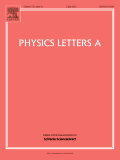
PHYSICS LETTERS A
Pioneering Insights in Physics and AstronomyPhysics Letters A is a renowned scientific journal published by Elsevier, dedicated to the field of physics and astronomy. Established in 1963, it has continuously evolved, offering a platform for the swift dissemination of significant research findings in various branches of physics. As of 2023, it holds a commendable Q2 ranking in the category of Physics and Astronomy (miscellaneous) and ranks 69th out of 243 journals in the same domain according to Scopus, positioning itself in the 71st percentile of academic impact. With its comprehensive scope, Physics Letters A provides a vital resource for researchers, professionals, and students, facilitating academic discourse and advancing knowledge across the field. Although it does not currently offer Open Access options, its rigorous peer-review process ensures high-quality content. It is centrally located in Amsterdam, Netherlands, and continues to be an essential outlet for innovative contributions to the physics community through the year 2024 and beyond.
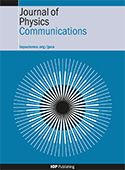
Journal of Physics Communications
Unlocking the Future of Physics ResearchJournal of Physics Communications, published by IOP Publishing Ltd, serves as a significant platform for the dissemination of innovative research in the realm of physics and astronomy. Since its inception in 2017, this Open Access journal has fostered a collaborative environment, allowing researchers, professionals, and students to share their findings and ideas without barriers. With an ISSN of 2399-6528, the journal has established its credibility in the academic community, achieving a ranking of Q3 in the 2023 category of Physics and Astronomy (miscellaneous), as well as a respectable position in Scopus with a rank of #122 out of 243 in its field. The journal's focus is on bridging theoretical concepts and practical applications, making it an essential resource for those engaged in the evolving landscape of physics. The Journal of Physics Communications not only aims to advance knowledge but also to inspire interdisciplinary collaboration, inviting contributions from diverse areas within physics. Authors and readers alike will find this journal particularly beneficial to stay updated on emerging trends and innovative research.
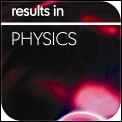
Results in Physics
Pioneering Discoveries in the World of PhysicsResults in Physics, an esteemed open-access journal published by ELSEVIER, has been a prominent platform for disseminating cutting-edge research in the field of physics since its establishment in 2011. With its ISSN 2211-3797 and E-ISSN 2211-3797, this journal proudly holds a Q2 ranking in the Physics and Astronomy category for 2023, showcasing its significance and quality within the scientific community. With a remarkable Scopus rank of #28 out of 243 in the general physics and astronomy domain, placing it within the 88th percentile, Results in Physics serves as a vital resource for researchers, professionals, and students alike, fostering a collaborative environment for the advancement of knowledge across various subfields. The journal aims to provide a rapid and unrestricted access to innovative findings, encouraging open scientific dialogue and enhancing the visibility of breakthrough research. Located in the Netherlands at RADARWEG 29, 1043 NX AMSTERDAM, Results in Physics continues to uphold its commitment to excellence and accessibility in the ever-evolving landscape of physics research.

Science China-Physics Mechanics & Astronomy
Empowering Researchers with Cutting-edge InsightsScience China-Physics Mechanics & Astronomy, published by SCIENCE PRESS, stands as a prestigious journal within the Physics and Astronomy domain, particularly recognized for its contributions to the understanding of fundamental and applied physics. With an exhilarating Q1 ranking in the 2023 category and earning a remarkable scopus rank of #21 out of 243, the journal demonstrates its significant impact, being positioned in the 91st percentile of its field. Operating under an Open Access model, it facilitates the broad dissemination of high-quality research, ensuring accessibility for researchers, professionals, and students worldwide. Its scope covers a variety of essential topics in physics and astronomy, promoting a comprehensive understanding of the latest advancements from 2010 through 2024. The journal is a vital resource for anyone aiming to stay at the forefront of research in these dynamic fields, with its prominent address located in Beijing, China, symbolizing its global influence.
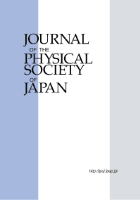
JOURNAL OF THE PHYSICAL SOCIETY OF JAPAN
Pioneering Innovative Research in Physical SciencesThe JOURNAL OF THE PHYSICAL SOCIETY OF JAPAN, published by the Physical Society of Japan, has been at the forefront of advancing knowledge in the field of Physics and Astronomy since its inception in 1946. With a commendable reputation reflected in its Q2 ranking within its category for 2023, this journal serves as a vital platform for disseminating high-quality research and innovative concepts. Researchers and professionals alike can engage with cutting-edge studies and reviews that span a diverse range of topics pivotal to the physical sciences. Although the journal does not currently operate with an open access model, it maintains a robust impact on the global physics community, evidenced by its placement in the 59th percentile among a competitive pool of 243 journals. With an unwavering commitment to bridging theory and application, the JOURNAL OF THE PHYSICAL SOCIETY OF JAPAN continues to inspire and cultivate scholarly discourse and collaboration across disciplines.
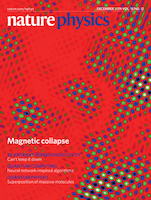
Nature Physics
Connecting Ideas, Inspiring Innovation in PhysicsNature Physics is a premier journal dedicated to publishing high-impact research in the realm of physics, brought to you by the esteemed NATURE PORTFOLIO. With its ISSN 1745-2473 and E-ISSN 1745-2481, this journal has established itself as a vital resource for the physics community, enjoying a remarkable Q1 quartile ranking in the Physics and Astronomy category for 2023 and securing an impressive Rank #5/243 and a 98th percentile ranking in Scopus. Since its inception in 2005, Nature Physics has become a catalyst for innovation, featuring cutting-edge research that encompasses a broad spectrum of physics disciplines. Although it operates under traditional subscription models, it maintains a commitment to accessibility through selective publications and editorial excellence. Positioned in Berlin, Germany, this journal is a must-read for researchers, professionals, and students who seek to stay at the forefront of advancements in physics.

JOURNAL OF EXPERIMENTAL AND THEORETICAL PHYSICS
Bridging Theoretical Insights with Experimental RealitiesJournal of Experimental and Theoretical Physics is a distinguished publication in the field of physics, dedicated to disseminating pioneering research and fostering intellectual discourse in both experimental and theoretical domains. Published by Pleiades Publishing Inc, this journal has established itself as a crucial platform for physicists, with a commendable Q3 categorization in the 2023 rankings within Physics and Astronomy, illustrating its impactful contributions to the discipline. The journal features a wide array of articles that delve into the intricacies of physical theory, experimental techniques, and applications, making it an invaluable resource for researchers, professionals, and students alike. Although it operates under a traditional access model, its longstanding history, dating back to 1980 and converging years through to 2023, underscores its commitment to advancing the frontiers of physics knowledge. The journal is also notable for its engagement in the scientific community, aiming to bridge the gap between theoretical predictions and experimental validations. As a part of Pleiades Publishing, it continues to uphold rigorous standards of academic excellence, inviting contributions that push the boundaries of current understanding and stimulate further exploration in the fascinating world of physics.
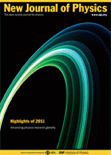
NEW JOURNAL OF PHYSICS
Innovating ideas, illuminating the world of physics.NEW JOURNAL OF PHYSICS, published by IOP Publishing Ltd, is a prestigious open-access journal that has been at the forefront of the physics community since its inception in 1998. With an impact factor that places it in the Q1 category of Physics and Astronomy (miscellaneous) and a commendable ranking of #49 out of 243 in the general physics and astronomy category according to Scopus, this journal is recognized for its significant contribution to advancing research in the field. The journal caters to a broad scope of topics, providing a platform for the dissemination of cutting-edge research findings and innovative theoretical explorations. Operating from the United Kingdom, it offers a truly international perspective, making its contents accessible and impactful to a global audience. With robust open-access options, the NEW JOURNAL OF PHYSICS ensures that research findings are freely available, promoting collaboration and knowledge sharing among researchers, professionals, and students alike. This commitment to accessibility, combined with its high-quality content, makes it an essential resource for anyone engaged in the physics community.

REVISTA MEXICANA DE FISICA
Empowering Scientific Discourse in Physics and AstronomyREVISTA MEXICANA DE FISICA is a prominent academic journal dedicated to advancing knowledge in the fields of Physics and Education. Published by the SOC MEXICANA FISICA, this journal plays a pivotal role in disseminating innovative research and educational methodologies from Mexico and beyond. With a publication history that spans from 1991 to 2024, it has established itself as an essential resource for researchers, professionals, and students who seek to deepen their understanding of general physics and astronomy. The journal is classified in the Q3 quartile in both education and physics & astronomy, showcasing its quality and relevance within the academic landscape. While the journal currently operates on a subscription basis, it provides a valuable platform for emerging voices and established scholars alike. By fostering a collaborative environment for scientific discourse, REVISTA MEXICANA DE FISICA continues to be an important channel for the ongoing evolution of scientific education and exploration in the physical sciences.